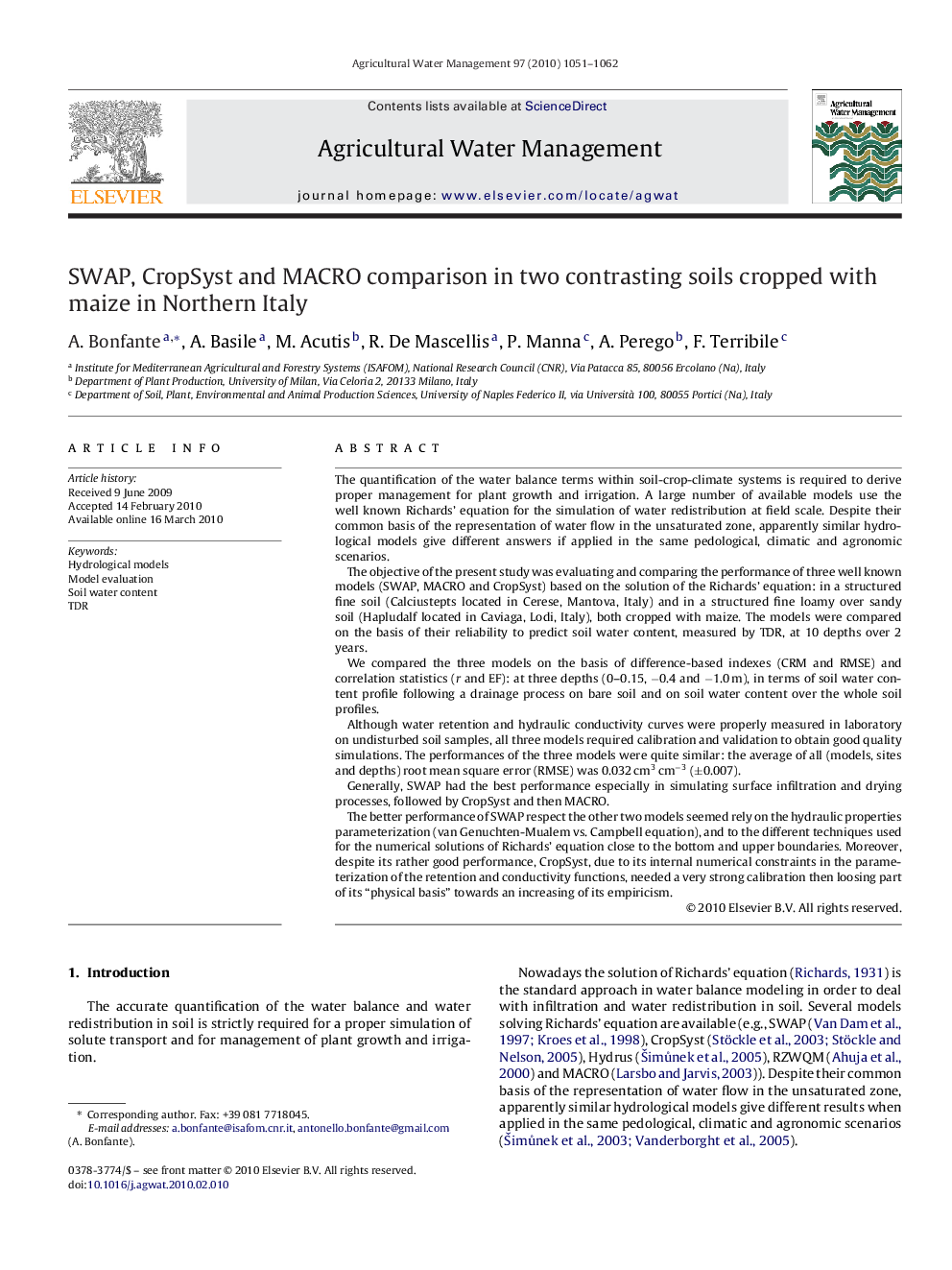| کد مقاله | کد نشریه | سال انتشار | مقاله انگلیسی | نسخه تمام متن |
|---|---|---|---|---|
| 4479453 | 1316443 | 2010 | 12 صفحه PDF | دانلود رایگان |

The quantification of the water balance terms within soil-crop-climate systems is required to derive proper management for plant growth and irrigation. A large number of available models use the well known Richards’ equation for the simulation of water redistribution at field scale. Despite their common basis of the representation of water flow in the unsaturated zone, apparently similar hydrological models give different answers if applied in the same pedological, climatic and agronomic scenarios.The objective of the present study was evaluating and comparing the performance of three well known models (SWAP, MACRO and CropSyst) based on the solution of the Richards’ equation: in a structured fine soil (Calciustepts located in Cerese, Mantova, Italy) and in a structured fine loamy over sandy soil (Hapludalf located in Caviaga, Lodi, Italy), both cropped with maize. The models were compared on the basis of their reliability to predict soil water content, measured by TDR, at 10 depths over 2 years.We compared the three models on the basis of difference-based indexes (CRM and RMSE) and correlation statistics (r and EF): at three depths (0–0.15, −0.4 and −1.0 m), in terms of soil water content profile following a drainage process on bare soil and on soil water content over the whole soil profiles.Although water retention and hydraulic conductivity curves were properly measured in laboratory on undisturbed soil samples, all three models required calibration and validation to obtain good quality simulations. The performances of the three models were quite similar: the average of all (models, sites and depths) root mean square error (RMSE) was 0.032 cm3 cm−3 (±0.007).Generally, SWAP had the best performance especially in simulating surface infiltration and drying processes, followed by CropSyst and then MACRO.The better performance of SWAP respect the other two models seemed rely on the hydraulic properties parameterization (van Genuchten-Mualem vs. Campbell equation), and to the different techniques used for the numerical solutions of Richards’ equation close to the bottom and upper boundaries. Moreover, despite its rather good performance, CropSyst, due to its internal numerical constraints in the parameterization of the retention and conductivity functions, needed a very strong calibration then loosing part of its “physical basis” towards an increasing of its empiricism.
Journal: Agricultural Water Management - Volume 97, Issue 7, July 2010, Pages 1051–1062